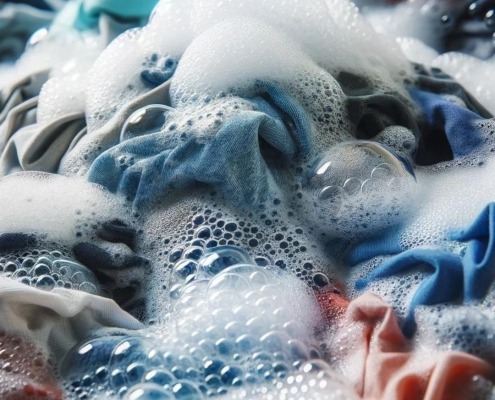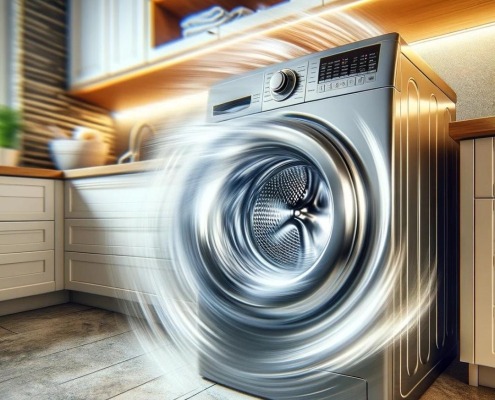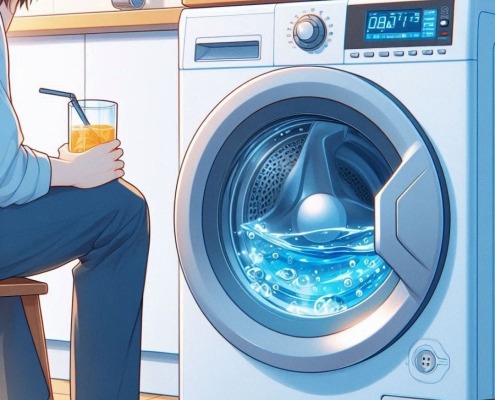How to replace the inlet valve on a Whirlpool washing machine
Steven E / Thursday May 1, 2025
Is your Whirlpool washer no longer filling properly or leaking water? These could be signs of a failing inlet valve, a common issue that can disrupt your laundry routine. Fortunately, with a little guidance and our step-by-step how-to video below, you can easily replace the inlet valve yourself and restore your washer’s performance in no time!
Looking for the right part? Enter your appliance model number below to find the exact match and get your appliance running like new again!
On a Whirlpool washer, the inlet valve is responsible for allowing hot and cold water to fill the machine during the wash cycle. A bad valve can cause issues such as a lack of water flow, leaks, or improper water temperature.
The repair should take approximately 30 to 45 minutes, depending on your level of experience with repairs. By following the instructions provided, you can confidently replace the inlet valve and ensure that your washer fills once again. So, let’s get started and learn how to replace the inlet valve on your Whirlpool washer.
Watch here: https://www.youtube.com/watch?v=XUjUdRH6VMA
The information in this article may not apply to your specific appliance model. We recommend consulting your manufacturer’s documentation or contact us with any questions.
What you’ll need
- Channel lock pliers
- Torx 20 screwdriver
- Flathead screwdriver
Safety precautions
- Always power off and unplug your appliance or switch off the circuit breaker before attempting any maintenance or replacement work. This keeps you safe by preventing any risk of injury from electric shock.
- Turn off the water supply at the outlet before beginning repairs to any appliance parts that hold water. Have towels ready for any residual water in the system when removing parts.
- Wear insulated work gloves to protect your hands from sharp metal parts, pinching hazards and debris.
- Don’t test wiring with a multimeter for live voltage if you’re unfamiliar with how to prevent short circuiting when testing.
- When working with wires, avoid touching any exposed wires or terminals. If you need to touch a wire, use a non-conductive tool or wear insulating gloves to prevent electrical shock.
- Take your time and don’t rush while working to prevent accidents and personal injuries.
- Work in a well-lit area so you can clearly see and access the interior parts.
- Clear your workspace of clutter and other obstacles. Keep children and pets away from the work area.
- Never work on internal parts with bare wet hands. Make sure the work area is completely dry.
- Check your user manual to see if there are specific installation or safety instructions for your part or appliance.
- Be gentle when handling or removing parts. Excessive force might damage the appliance or cause injury.
- Wear safety glasses when working with chemicals, dust or cleaning large debris to prevent injury.
- If the appliance has recently been used, give it plenty of time for any heating parts to cool down before working on it.
Replacement steps
Removal
- Using channel locks, remove the hot and cold fill hoses from the water inlet valve. Take note of the labels on the machine indicating which hose is for hot and which is for cold. Place a towel on the floor to catch any water that may spill during the removal process.
- Remove the top panel of the machine. Locate and remove the three screws across the back of the machine.
- Pull the panel back slightly and then lift it up to remove it from the machine.
- Remove the wires from the valve by lifting up on the little tabs at the top and pulling the wires out.
- Once the wires are disconnected, locate the mounting screw on the back panel of the machine. It is a number-20 torx screw. Unscrew it to release the valve.
- With the screw removed, lift the valve up to detach it from the washer.
- Use pliers to remove the clamp securing the hose to the valve. If the hose is tight and difficult to remove, use a small flat-head screwdriver to assist in loosening it.
Installation
- Reconnect the water line to the new valve.
- Use pliers to run the clamp back up the hose and secure it in place.
- Place the valve back into the washer and mount it to the back wall using the mounting screw. Screw it into place.
- Connect the wires to the new valve. Push the wires into place, ensuring they are in the same positions as the old valve. Use the little tab on the top of the valve to lock the wires securely.
- Put the top panel back on the machine. Align the holes in the front of the panel with the pins along the front of the console. Lift the panel up, set it down, and push it forward until it is snug against the console.
- Go to the backside of the machine and reinsert the three Torx screws to secure the top panel.
- Reconnect the hot and cold water hoses. Thread them on and tighten them down using the channel locks. Make sure they are securely tightened to prevent leaks.
- Plug the washer back in and turn the water supply back on.
- Test the washer to check for any problems or leaks.
Additional information
Thanks for reading! We hope this guide helped you replace the inlet valve on your Whirlpool washer.
If you still need some replacement parts, grab your model number and head over to AppliancePartsPros.com. We offer over two million parts and most orders arrive in two business days. If you need some help with finding the right part or placing an order, you can contact our team at 1 (877) 477-7278.
While you’re waiting for your new part to arrive, you can explore our DIY blog and watch thousands of video tutorials on our YouTube channel.
Be sure to follow us on Facebook, Twitter and Instagram to see our latest repair guides!
With nearly a decade of experience in providing top-notch customer service regarding appliance parts and repair, Steven enjoys sharing practical advice, troubleshooting tips, and interesting information to help readers stay informed.





